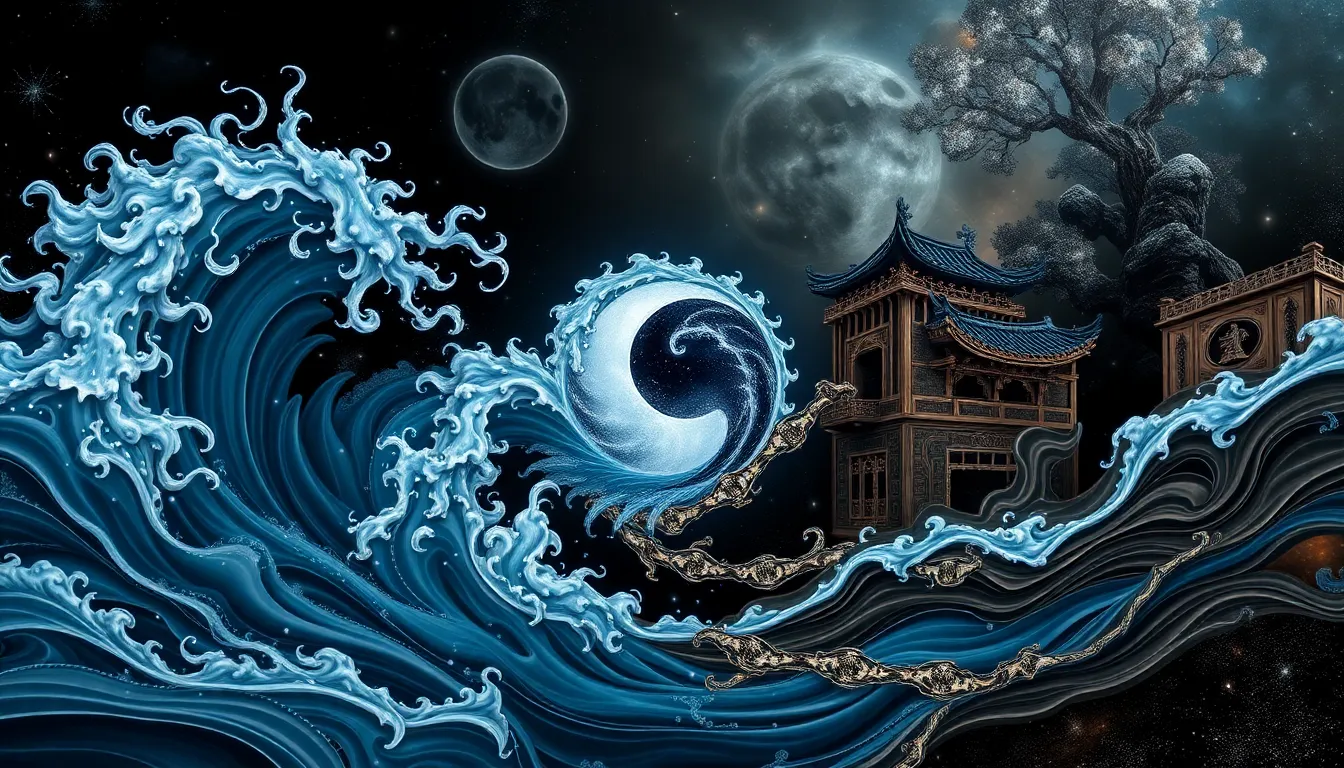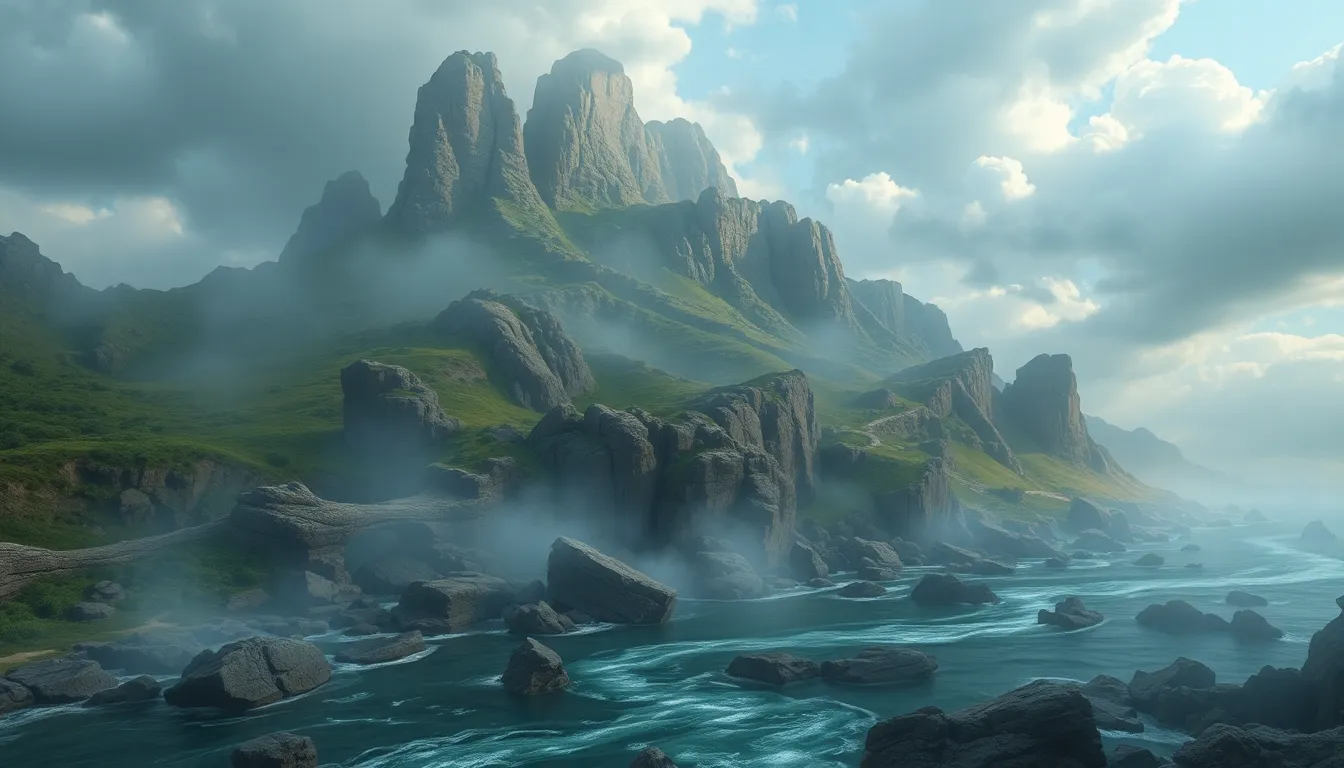The River of the Dreamers: Myths of Inspiration
I. Introduction
The concept of the “River of the Dreamers” serves as a powerful metaphor for the journey through creativity and inspiration. This mythical river flows through the landscapes of our minds, nourishing our dreams and fostering the emergence of innovative ideas. As we delve into the depths of this river, we uncover the significance of myths in shaping our understanding of inspiration.
Myths have played a crucial role in various cultures throughout history, acting as vessels that convey timeless truths and insights about the human experience. They help us navigate the complexities of creativity, offering frameworks through which we can explore our inner worlds. This article aims to explore diverse cultural myths that inspire creativity, showcasing how they can illuminate our paths as we seek inspiration in our own lives.
II. The Origins of the River of the Dreamers
The myth of the River of the Dreamers has roots in various historical contexts, often symbolizing the fluid nature of inspiration and creativity. Different civilizations have woven their own interpretations around this concept, showcasing the universality of the idea that inspiration flows like water.
Across cultures, we find variations of the river myth, where streams and rivers represent pathways to wisdom and creativity. For example:
- In ancient Mesopotamia, the Euphrates and Tigris rivers were revered as sources of life and knowledge.
- In Hindu mythology, the Ganges River is considered sacred and is believed to cleanse the soul, offering inspiration to those who seek it.
- Native American folklore often speaks of rivers as spirit guides, leading individuals to profound realizations and creative insights.
Rivers symbolize transformation, movement, and the passage of time, all of which are integral to the creative process.
III. The Role of Myth in Personal and Collective Inspiration
Myths shape our understanding of inspiration by providing narratives that resonate with our experiences. They connect personal aspirations with collective cultural wisdom, enabling us to tap into a larger pool of creativity.
From a psychological perspective, myths can inspire creativity by:
- Offering archetypal stories that reflect our inner struggles and aspirations.
- Encouraging imaginative thinking by presenting fantastical elements that challenge conventional boundaries.
- Creating a sense of belonging and shared identity through communal narratives.
Many artists and thinkers throughout history have drawn inspiration from these myths. For instance, the surrealist painter Salvador Dalí was influenced by the myth of Narcissus, exploring themes of identity and self-reflection in his work.
IV. Notable Myths Related to Inspiration
A. The Muses of Ancient Greece
In ancient Greece, the Muses were revered as nine goddesses, each representing a different domain of the arts and sciences. They served as sources of inspiration for poets, musicians, and philosophers alike. The Muses included:
- Calliope: Muse of epic poetry.
- Clio: Muse of history.
- Erato: Muse of love poetry.
- Euterpe: Muse of music.
- Melpomene: Muse of tragedy.
- Polyhymnia: Muse of sacred poetry.
- Terpsichore: Muse of dance.
- Thalia: Muse of comedy.
- Urania: Muse of astronomy.
The influence of the Muses on art, literature, and science is profound, as they embody the spirit of creativity and insight that artists aspire to capture.
B. The Dreamtime of Indigenous Australian Cultures
The Dreamtime, or Tjukurpa, is a foundational concept in Indigenous Australian cultures, representing a time when ancestral beings created the land, its people, and the laws governing them. This rich tapestry of stories connects individuals to their land and heritage, inspiring creativity and a sense of belonging.
Dreamtime stories often serve to:
- Explain natural phenomena and the creation of the world.
- Inspire communal creativity through shared narratives.
- Encourage respect for the land and its resources.
These stories continue to inspire both communal and individual creativity, emphasizing the interconnectedness of life and the importance of storytelling.
V. The River as a Metaphor for the Creative Process
The river metaphor is particularly potent when exploring the creative process. Just as a river flows, so too does creativity, often requiring navigation through twists and turns.
Consider the themes of flow and transformation:
- Flow: Creativity thrives when it is allowed to flow freely, much like a river carving its path through the landscape.
- Transformation: The river symbolizes change, reminding us that creativity is an evolving journey.
However, the metaphor also contrasts stagnation with movement. When creativity becomes stagnant, it is essential to seek new inspirations and experiences to rejuvenate the flow.
To harness the river’s flow in personal work, consider these techniques:
- Engage in regular creative practices, such as journaling or sketching.
- Seek inspiration from nature and the environment around you.
- Experiment with new mediums or styles to break free from routine.
VI. Modern Interpretations of the River of the Dreamers
In contemporary society, artists continue to reinterpret ancient myths, including the River of the Dreamers. Literature, films, and various forms of art draw upon these rich narratives to explore modern themes of creativity and inspiration.
Examples include:
- Films that depict characters embarking on journeys along metaphorical rivers, discovering their creative voices.
- Literary works that weave in mythological elements to enhance themes of personal growth and self-discovery.
- Digital art that utilizes the river motif to symbolize the flow of ideas in the age of technology.
Digital culture has significantly impacted myth-making, allowing new stories to emerge that resonate with contemporary audiences.
VII. The Intersection of Science and Myth in Inspiration
Recent neurological studies have begun to explore the connections between creativity and inspiration, shedding light on how myths can act as catalysts for innovative thought.
Myths often serve to:
- Stimulate imaginative thinking by presenting complex narratives that challenge our perceptions.
- Inspire scientific exploration, as many scientists have drawn inspiration from mythological narratives in their pursuits.
For instance, physicist Albert Einstein often referred to mythological concepts when discussing the nature of reality, showcasing the interplay between scientific inquiry and mythological inspiration.
VIII. Global Perspectives on Inspiration Myths
Inspiration myths vary significantly across cultures, offering diverse perspectives on creativity. Indigenous myths from various cultures emphasize the connection between people and their environment, while Eastern philosophies often focus on inner reflection and harmony.
Comparative analysis reveals:
- Western myths often emphasize individual genius and heroic journeys.
- Non-Western myths frequently highlight communal creativity and the interconnectedness of all beings.
These diverse perspectives enrich our understanding of inspiration, illustrating that creativity can manifest in myriad forms.
IX. Personal Journey: Finding Your Own River of Inspiration
To connect with your own river of inspiration, consider these steps:
- Reflect on personal myths and stories that resonate with you.
- Engage in creative exercises that encourage exploration of your inner landscape.
- Surround yourself with environments and communities that nurture creativity.
Exercises for tapping into your creative river might include:
- Journaling your dreams and insights.
- Creating vision boards that represent your aspirations.
- Participating in collaborative art projects that inspire collective creativity.
Ultimately, the journey to find your own river of inspiration is personal and unique. Embrace the flow of creativity, and allow the myths that resonate with you to guide your artistic endeavors.



